On August 8, 2025, CMB International, a subsidiary of China Merchants Bank, announced its collaboration with Singapore's digital exchange DigiFT and the Solana public chain service provider OnChain to tokenize a US dollar money market fund recognized in both Hong Kong and Singapore, issuing the token CMBMINT on-chain. Notably, this marks the first instance of a tokenized fund across multiple jurisdictions, and the issuance led by an Asian financial giant will serve as a good compliance model for future multi-regional cooperation in RWA.
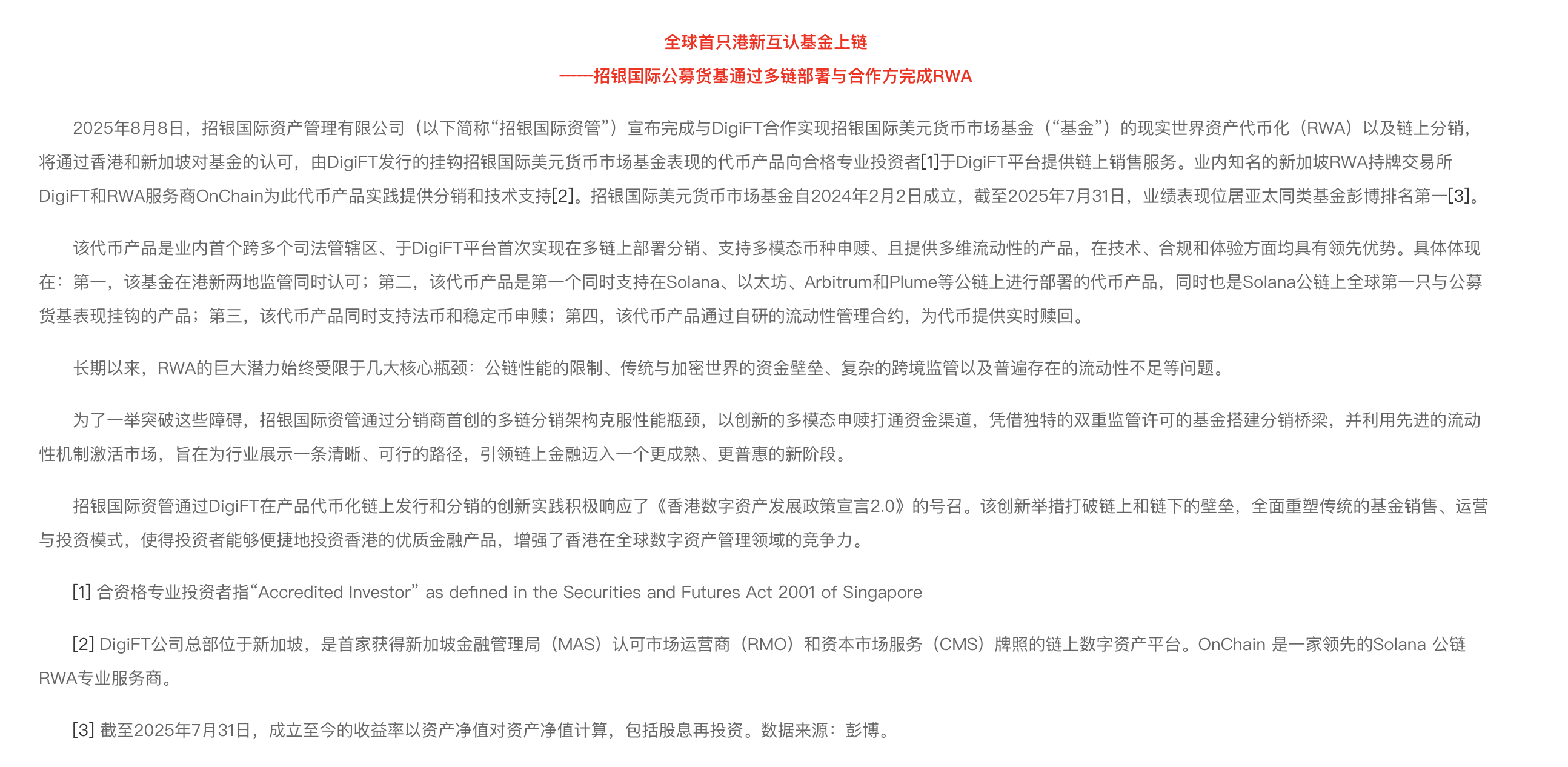
On August 13, Solana's official announcement confirmed that Solana would be the primary chain for the tokenization of this fund, marking the first tokenized public fund product on the Solana public chain, and the market reacted optimistically. Solana's price rose 15% in the past 24 hours, and within three hours of the announcement, the price surged another 5%, breaking the $200 mark.
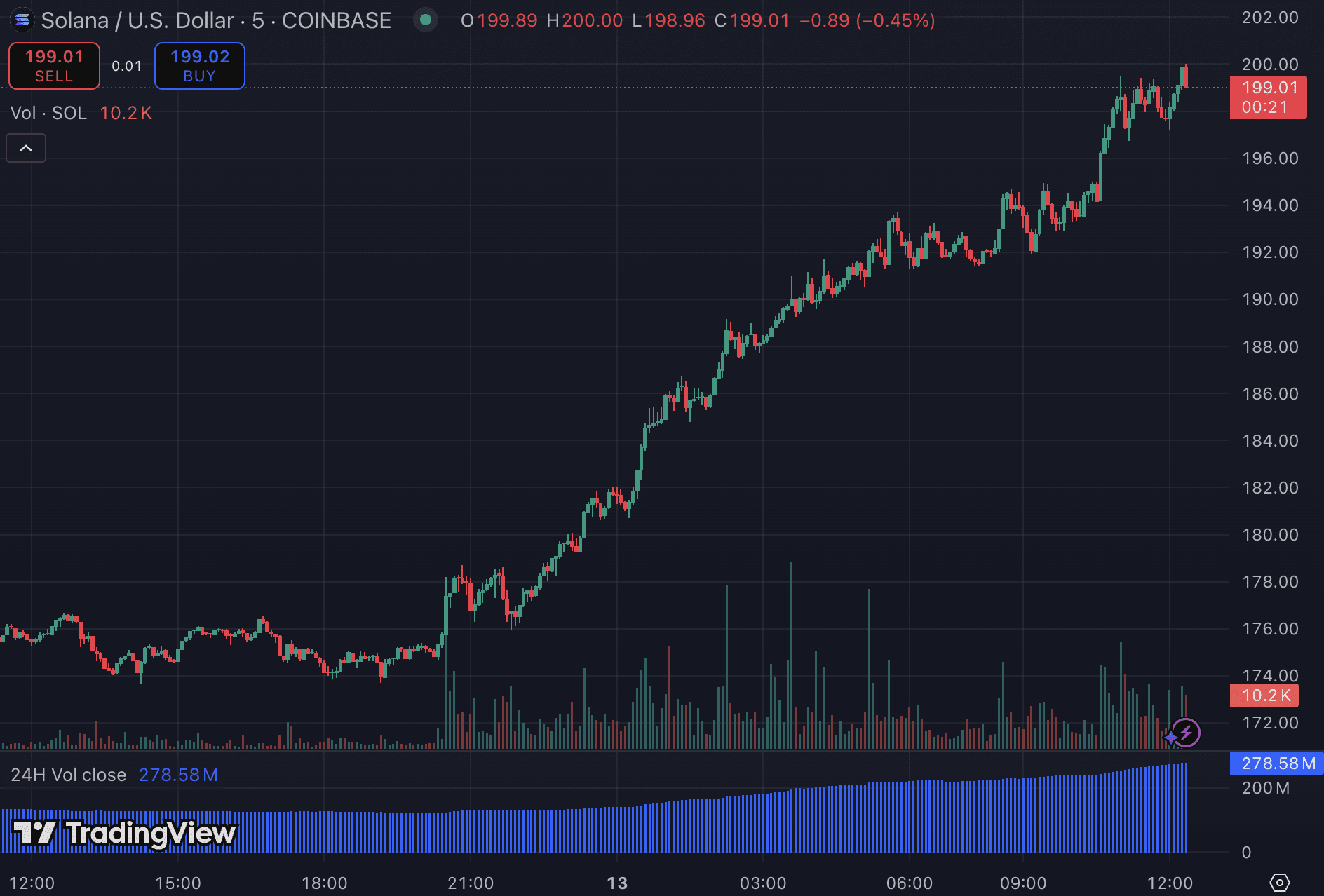
This article will interpret how the institutional network behind this cooperation operates, CMB International's blockchain layout and ambitions, as well as the investment contents contained in the on-chain fund CMBMINT itself.
How was the first on-chain fund of Solana achieved?
The fund tokenization project gathers multiple forces from traditional finance and the blockchain sector. CMB International Asset Management provides high-quality fund assets and regulatory compliance guarantees, DigiFT offers the on-chain issuance and trading platform, and OnChain is responsible for underlying technology deployment and public chain distribution support. The three parties work together to achieve the on-chain issuance of traditional money market funds.
The tokenized asset is the CMB International US Dollar Money Market Fund (CMBMINT), which is a US dollar-denominated money market fund established in February 2024. Seventy percent of the fund is invested in short-term high-quality US dollar deposits, treasury bills, and commercial paper, which are low-volatility instruments, while thirty percent is invested in non-dollar-denominated short-term deposits and high-quality money market instruments, overall pursuing capital preservation and stable returns.
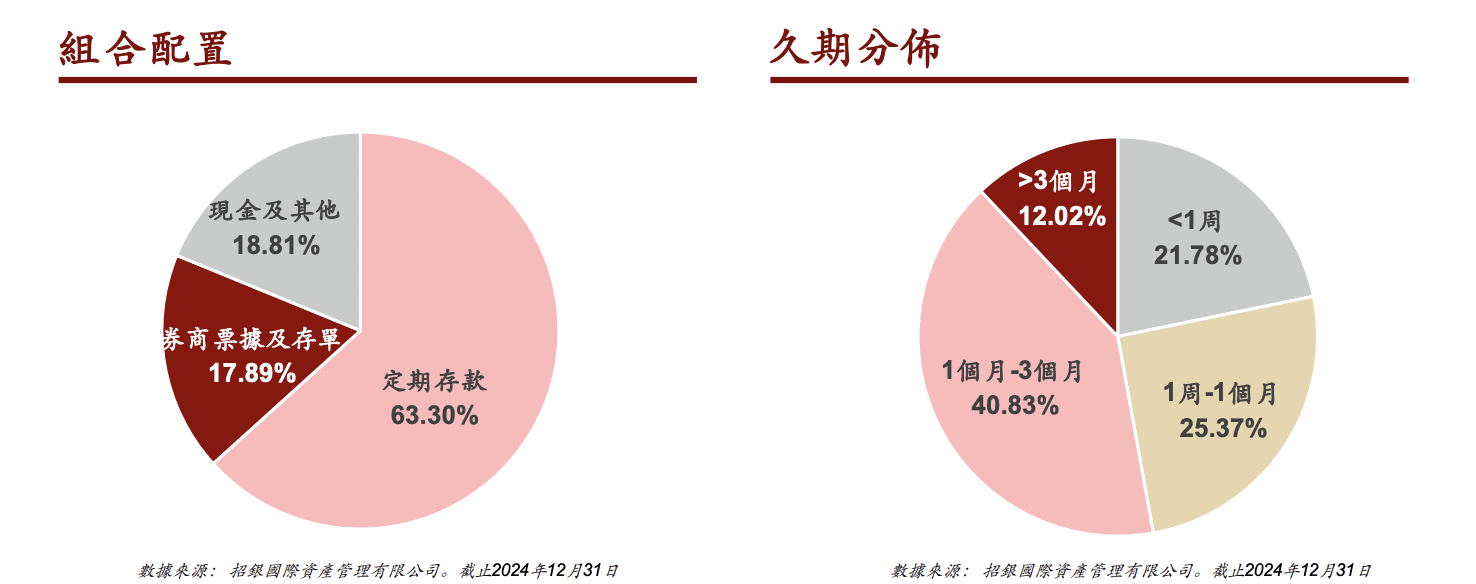
Since its establishment, the fund has performed excellently, ranking first among similar money market funds in the Asia-Pacific region according to Bloomberg as of July 31, 2025. As it is a Hong Kong-Singapore mutual recognition fund, the fund is subject to regulation in both regions, and its investors are classified as qualified professional investors. Therefore, at present, the project is initially limited to recognized investors in Singapore subscribing to fund tokens through the DigiFT platform to ensure that participants meet local regulatory requirements (in the future, depending on the degree of regulatory openness, it may expand to institutional clients in Hong Kong and other jurisdictions).
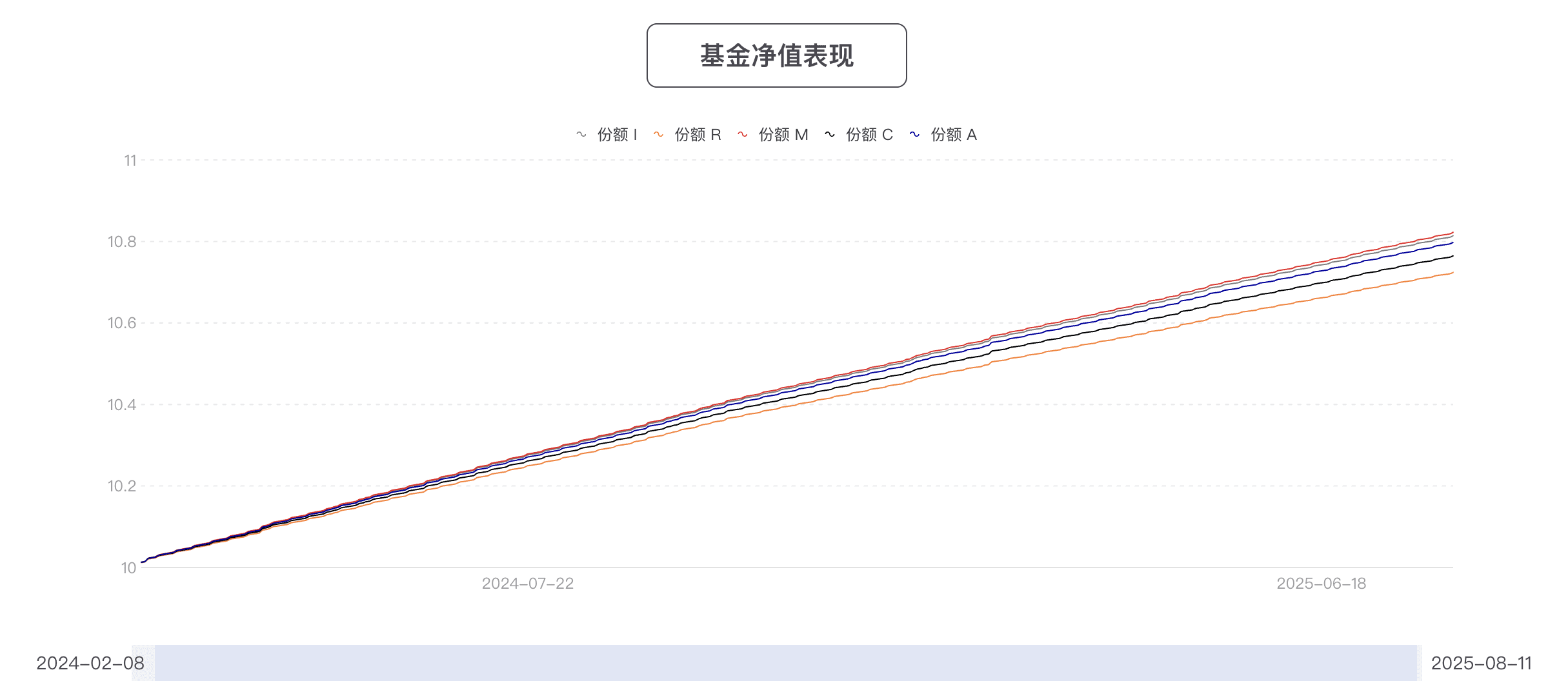
The annualized yield for each share generally maintains above 4%, source: CMB official website.
With the collaboration of DigiFT and OnChain, the money market fund has completed the on-chain mapping and distribution of real assets. Specifically, DigiFT, as a licensed exchange, issues tokens linked to the fund's net asset value, with each token representing a certain share of the fund, and holders enjoy corresponding rights to income. Notably, this issuance pioneers the multi-chain deployment of public fund tokens, and in addition to Solana, the CMBMINT token will subsequently be deployed on Ethereum, Arbitrum, and Plume Network.
In terms of liquidity and redemption mechanisms, CMBMINT fund tokens support multi-currency subscriptions and redemptions, allowing investors to use both fiat currency and mainstream stablecoins such as USDC and USDT for fund transactions. Through the smart contracts designed by the DigiFT platform, the project achieves an almost real-time T+0 redemption experience: 'After investors submit a redemption request, they can directly exchange fund tokens on-chain for an equivalent amount of stablecoin or fiat currency, with funds arriving instantly, eliminating the need to wait for the traditional fund redemption 'T+N' cycle.'
Behind this is the collaborative effort between DigiFT and the CMB International Asset Management team. DigiFT prepares a liquidity pool for the fund tokens, while CMB International ensures the connection between on-chain redemptions and the realization of fund assets by allocating bank demand deposits and short-term bonds as underlying assets. The fund token price is linked to the fund's net asset value (NAV) and is adjusted daily based on fluctuations in the value of the fund's assets. On-chain holders can transparently view the fund's asset portfolio and performance.
As the on-chain version of the Hong Kong-Singapore mutual recognition fund, CMBMINT adopts an innovative and robust model in its regulatory compliance framework. The fund itself remains under the supervision of the Hong Kong SFC and the Monetary Authority of Singapore (through the mutual recognition mechanism), while the issuance and trading of tokens are conducted under the platform of the licensed organization DigiFT in Singapore. This 'dual regulation' framework ensures that both the underlying assets and the trading environment are in a legal and compliant state. At the same time, the smart contracts of the fund tokens have undergone rigorous security audits and introduced risk reserve and Proof of Reserve mechanisms to ensure on-chain asset safety, transparency, and sufficient support.
CMB International's blockchain layout.
As a state-owned traditional financial institution, CMB International is among the early players in the blockchain industry. It has built its blockchain network through investments, funds, and business collaborations. These early explorations not only earned it a first-mover advantage in the industry but also laid the foundation for obtaining virtual asset licenses and launching on-chain funds and other innovative businesses. From underlying technology and public chain ecosystems to decentralized finance and virtual asset services, CMB International's blockchain journey can be described as comprehensive and in-depth.
Investment in underlying technology (2017-2018).
CMB International's earliest involvement in the blockchain field can be traced back to late 2017. At that time, it participated in the Pre-A round financing of the Chinese blockchain technology startup 'Cryptape', founded by former core Ethereum developer Xie Hanjian, focusing on the research and development of underlying blockchain technology and developing the enterprise-level chain architecture CITA, with the code open-sourced in July 2017. CITA pioneered a blockchain architecture that combines 'microservices + logical nodes,' significantly enhancing network performance and scalability.
Not long after, in July 2018, CMB International invested in the Chinese star public chain project Nervos Network. Nervos is a public chain ecosystem with a layered architecture, aimed at solving the scalability challenges of blockchain. Notably, CMB International not only provided funding but also facilitated cooperation exploration between the invested project and the China Merchants Bank system: for example, Nervos and the Cryptape team assisted China Merchants Bank in developing an open permissioned chain to meet the needs of financial operations using alliance chain technology.
Ecosystem fund and diversified expansion (2019-2022).
After initially mastering the underlying public chain, CMB International accelerated its investment pace in the blockchain application ecosystem. Since 2019, its investment team has deeply researched blockchain application directions such as payment clearing, tokenization, and identity authentication, and discussed decentralized finance (DeFi) service solutions with institutions like Nervos Foundation, nurturing broader cooperation opportunities.
In May 2021, CMB International jointly initiated a blockchain ecosystem fund 'InNervation' with Nervos, with a total amount of 50 million USD, planning to invest in blockchain start-up projects with practical application prospects worldwide over three years. This fund focuses on DApps, DeFi protocols, NFT platforms, and Layer1/Layer2 infrastructure construction based on Nervos and related ecosystems, providing funding support ranging from 200,000 to 2 million USD for early-stage projects.
In addition to the public chain ecosystem, CMB International continues to focus on alliance chains and enterprise service areas. In July 2022, the blockchain infrastructure provider "Rivtower" completed a Pre-B round financing of tens of millions of RMB, with CMB International continuing to increase investment as an early shareholder. Rivtower was established by a domestic open-source alliance chain technology team and developed the world's first cloud-native blockchain framework, CITA-Cloud, providing underlying technological support for the industrial internet and government-enterprise markets. CMB International's continued follow-up investment in its A+ round and Pre-B round indicates its long-term optimism for the blockchain infrastructure sector and further consolidates its influence in the domestic alliance chain/Web3 infrastructure circle.
Exploration of virtual asset services (2022-2025).
As blockchain and financial applications gradually integrate, CMB International has begun to explore new fields that merge digital assets and financial technology in recent years. Between 2022 and 2023, CMB International acted as the exclusive placement agent for the Hong Kong-listed company Arta TechFin (279.HK), assisting it in completing stock issuance and convertible bond issuance. Arta TechFin, founded by Zheng Zhigang, the executive vice chairman of Hong Kong's New World Group, aims to connect Web2 and Web3 using new technologies like blockchain, providing a one-stop high-end financial service that merges virtual and traditional assets. Its products include the Arta Wallet, which utilizes world-class security technology, and the regulated digital securities issuance platform Arta STO based on blockchain.
These forward-looking investments have also earned CMB International recognition from regulators. On July 14, 2025, CMB International Securities Limited officially obtained approval from the Hong Kong Securities and Futures Commission, becoming the first Chinese bank-affiliated brokerage in Hong Kong to secure a virtual asset trading service license. This means that CMB International can legally provide trading services for qualified investors, including cryptocurrencies such as Bitcoin and Ethereum in Hong Kong, expanding its business scope from traditional stocks to the digital asset field.
Which Chinese institutions are behind this 'century cooperation' between American public chains and Chinese institutions?
Behind the successful realization of this cross-border on-chain fund, two key institutions, DigiFT and OnChain, deserve attention: one connects with CMB International through regulatory compliance, while the other focuses on public chain technical issuance support to 'connect' with public chains like Solana. Who exactly are they?
DigiFT: Pioneer of compliant on-chain trading exchanges.
DigiFT is a fintech company established in 2021 in Singapore, dedicated to creating a compliant and decentralized on-chain digital asset exchange. Its founder, Henry Zhang, has a senior banking background, which has made DigiFT place great emphasis on regulatory compliance from the very beginning.
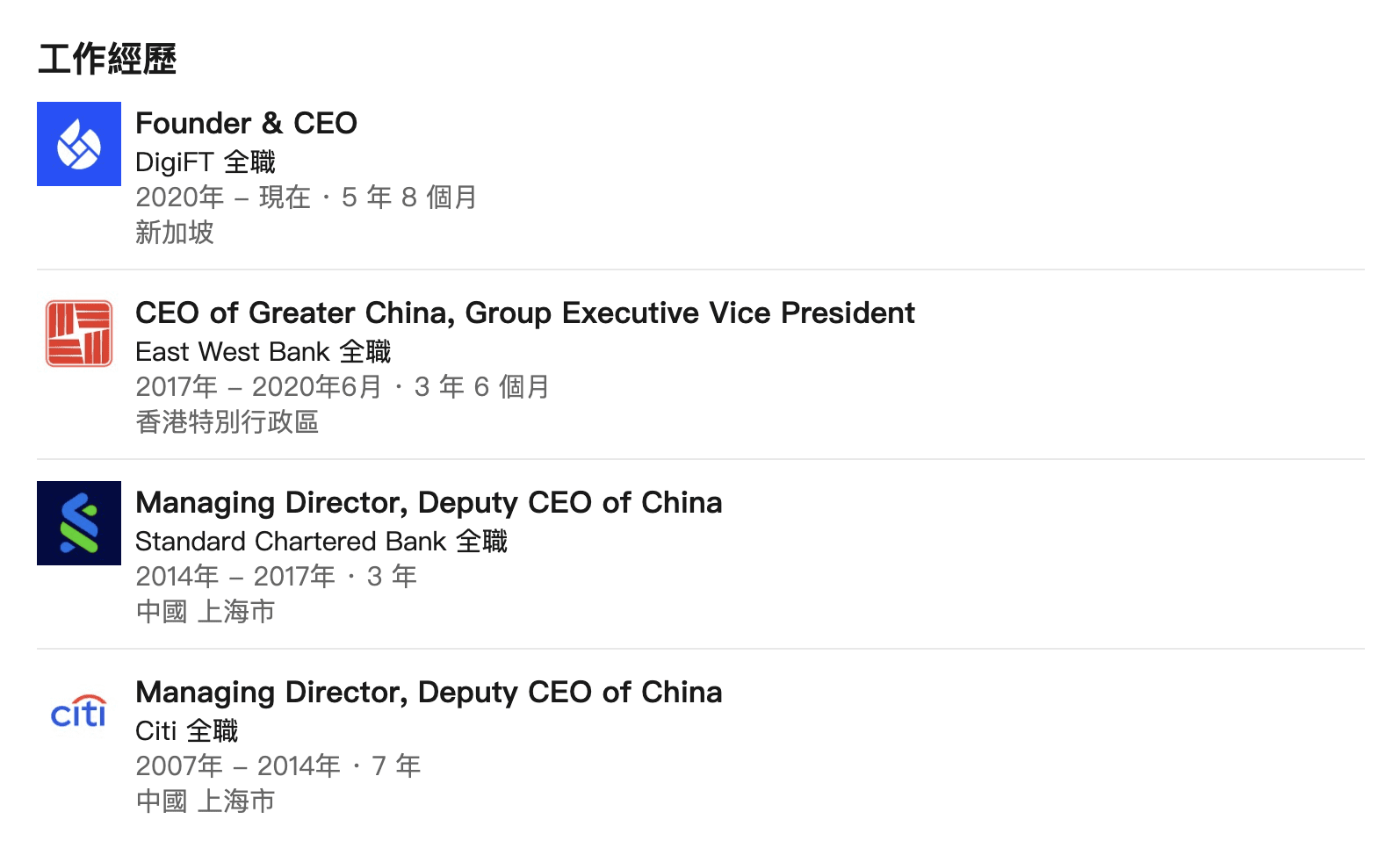
Henry Zhang has nearly 13 years of experience as an executive in foreign banks in Chinese-speaking regions, source: LinkedIn.
DigiFT is the world's first on-chain trading platform recognized by the Monetary Authority of Singapore as an official market operator (RMO) and holding a Capital Markets Services license (CMS). With this dual license, DigiFT can legally provide on-chain security token issuance and trading services to qualified investors. In terms of technological innovation, DigiFT was the first to launch the world's first compliant on-chain automated market maker (AMM) mechanism, combining the efficiency of decentralized trading with traditional regulatory requirements. Additionally, the platform has issued the world's first tokenized U.S. Treasury depositary receipts and other products, proving the feasibility of bringing real financial assets into the DeFi realm.
In 2025, DigiFT also obtained a digital asset custody license from the Monetary Authority of Singapore, extending its business scope to compliant custody services, further enhancing its end-to-end RWA solution capabilities. In this CMBMINT project, DigiFT plays the role of issuer and exchange: it issues tokens linked to the fund's net asset value and provides qualified investors with subscription, trading, and redemption channels through its platform.
In fact, before this cooperation, DigiFT had already completed multiple collaborations on RWA tokenization. In February 2025, DigiFT partnered with Invesco to launch a $630 million tokenized private credit fund (iSNR), deployed on the Arbitrum chain, supporting USDC/USDT subscriptions and extending to the Plume network. In March 2025, it launched two tokenized index funds tracking AI stocks (such as Apple, Tesla) and major crypto assets. DigiFT acted as UBS's on-chain tokenization distribution partner, supporting products like uMINT (US dollar money market fund) and collaborated with KuCoin in August this year to operate uMINT as collateral on its platform. Additionally, they have partnered with institutions and projects such as HashKey Capital, FundBridge, Wellington Management, Libeara, Chainlink, IOST, WSPN, and GSR in varying degrees in the field of tokenized physical assets.
It is precisely because DigiFT possesses mature compliance operation experience and innovative on-chain trading technology that CMB International can confidently entrust the management of fund token issuance and circulation to it. Traditional institutions are responsible for asset and compliance oversight, while innovative platforms handle technical implementation and market liquidity, allowing both to showcase their strengths.
OnChain: The RWA technology promoter.
The Onchain Foundation's predecessor is the Lisk Foundation, established in 2016, which raised 14,000 BTC through token issuance that year, aiming to create a blockchain SDK for JavaScript developers and to build a 'blockchain network' composed of multiple sidechains in a democratized manner. However, as the industry converged towards Ethereum EVM at the standard level, the appeal of non-EVM sidechains waned, coupled with the emergence of new expansion solutions like Layer2, the early Lisk technological route gradually faced limitations.
By the end of 2022, internal research within Onchain found that even large Layer1 infrastructure projects still face challenges in commercial sustainability. In 2023, the team made a strategic adjustment, reshaping the foundation into Onchain Foundation, a non-profit organization incubating multiple product lines in a 'Venture Builder' model. This transformation retained the original interdisciplinary core team of about one hundred, and established Onchain Ventures AG as the operating department, while also setting up legal entities in Zug, Switzerland, Abu Dhabi, and other locations for different business lines, achieving separation of governance and execution.
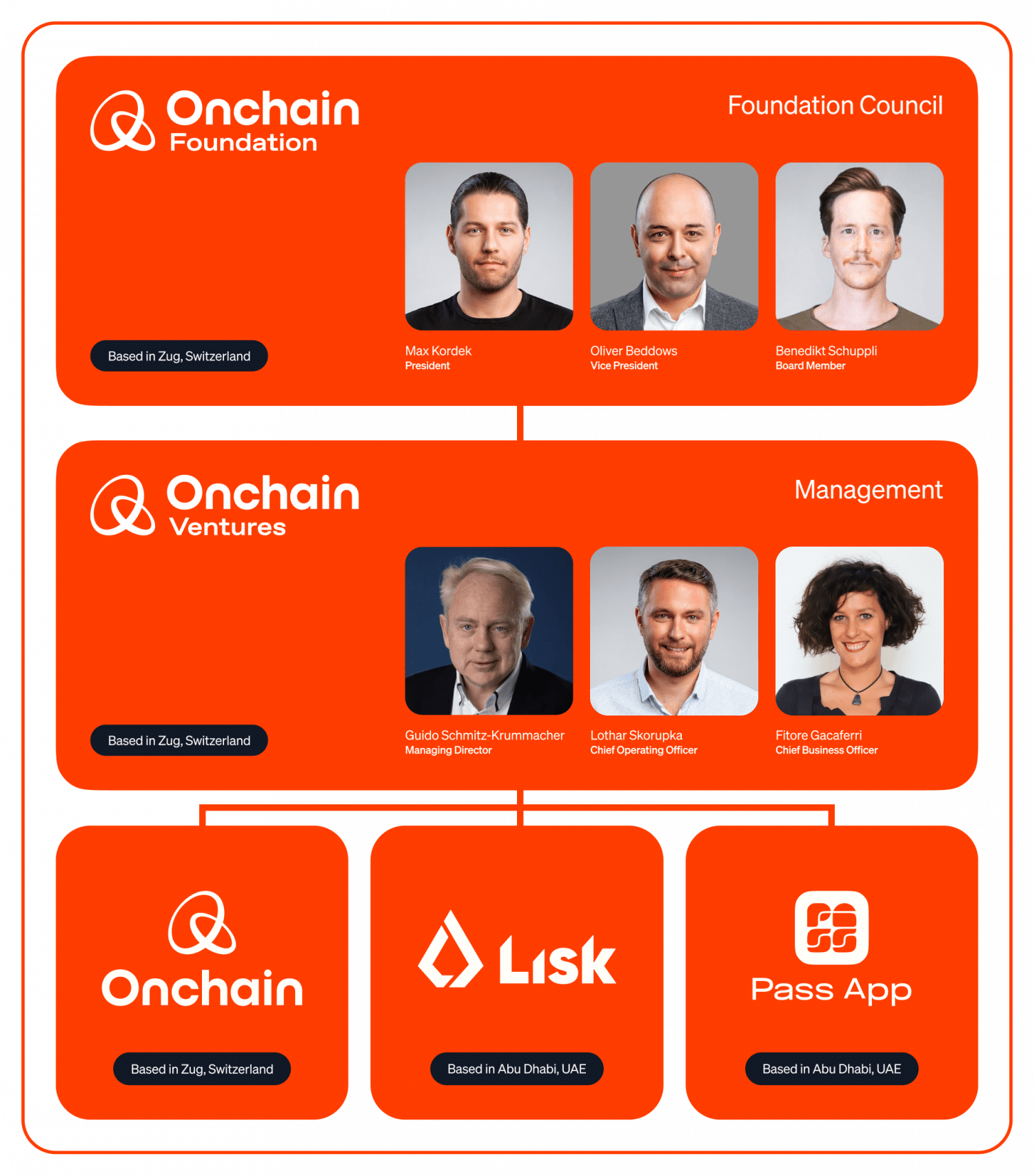
Current Onchain corporate architecture, source: Onchain official website.
Today, the Onchain Foundation focuses on a diversified layout of blockchain infrastructure and applications, including Layer2 Rollup technology, smart wallet Pass App, and research platforms for real-world use cases. It is also an early member of the Optimism Superchain, working with Optimism, Base, Worldchain, and others to build an interoperable 'super network.' This dual-track mode of technology and ecological development allows Onchain to rapidly enter emerging fields such as RWA tokenization.
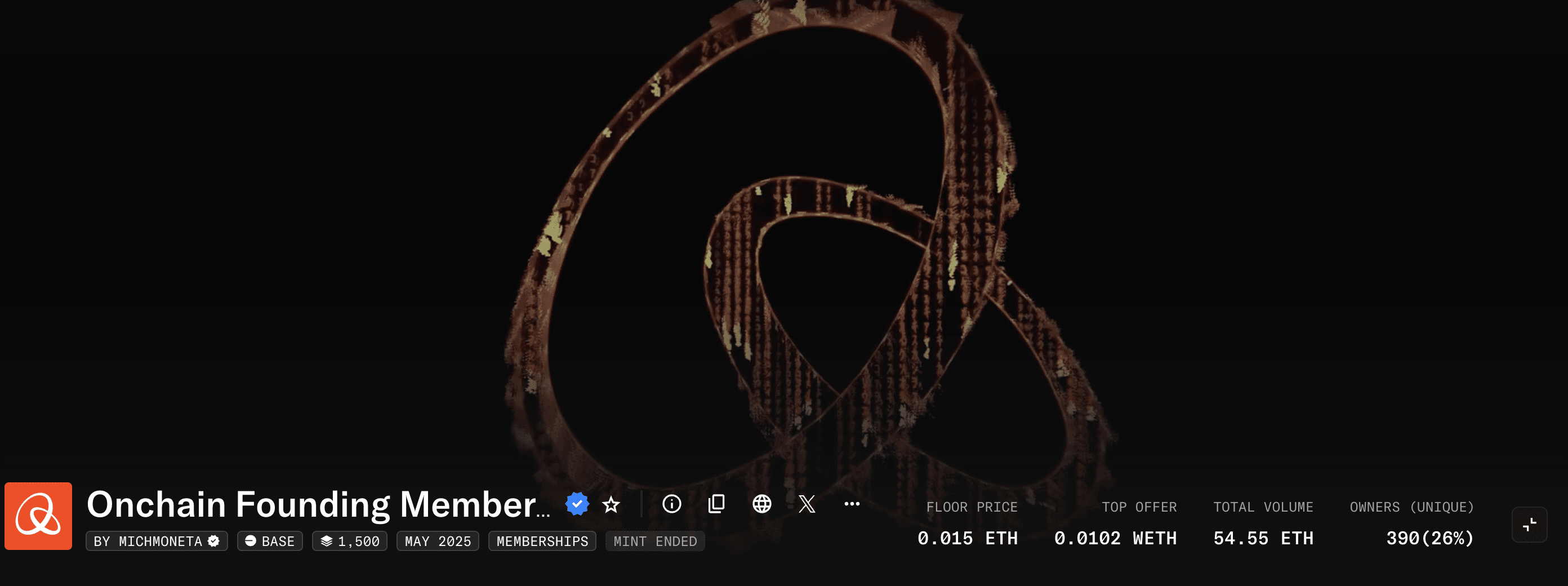
The 1500 genesis members NFT of Onchain, source: OpenSea.
In the CMBMINT project, Onchain serves as the RWA technology service provider for the Solana public chain, responsible for the deployment and distribution support of tokens on Solana and other public chains. This role is not merely technical outsourcing; it reflects its long-term accumulation in multi-chain architecture, cross-chain interaction, and public chain performance optimization. Compared to DigiFT, which relies on licensing and compliance, Onchain provides indispensable support in technical implementation and on-chain distribution, allowing CMB International's traditional fund assets to seamlessly integrate into the high-performance Solana network and expand into a multi-chain ecosystem.
The era of RWA for large institutions.
An increasing number of institutions collaborating with on-chain projects reflects a trend: only when the forces of regulation, assets, and technology combine can RWA projects truly take root and achieve success. From a broader perspective, Asian financial institutions (Hong Kong's new policies, Singapore's sandbox) are building a stage for such cross-border blockchain innovations. In the future, as more traditional giants and blockchain innovation enterprises 'connect the dots,' we have reason to expect more cross-market and cross-technology collaborations, promoting the maturity of real-world assets on-chain and bringing new possibilities for the globalization of financial markets.


